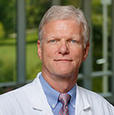My new patient had lost 30 pounds over the past couple of months because he could not swallow but was too proud to call his family. He had been growing progressively weaker and was only a shadow of what he had been; “He could walk through a harp,” we sometimes say. His breathing passage was getting tight. His family, who had not seen him for a few weeks, was alarmed. They finally reached him on the telephone and went to the house where he lived by himself. They all but dragged him to the local hospital.
A physician found a large cancer of the throat and immediately transferred him to us; we had gone to the operating room for a tracheotomy and placement of a feeding tube. Now he was stable.
It was time to discuss moving him back closer to his home for further care. As I walked into the room, I glanced at the two daughters, their husbands, and their kids. The scene was all too familiar: a concerned but estranged family with a lot of history and a dad who had absolutely no intention of getting any assistance from anyone.
He coughed. They scowled. I looked for a way to make a connection.
By chance, I glanced at the bulletin board in his hospital room where the family had tacked up an old photograph. I scanned through the faces of several smiling men wearing identical shirts and holding bowling balls. Their hairstyles and the faded image placed the picture in the mid 1980s – about 20 years ago.
“What’s this?” I asked. “Tell me the story.”
“Dad was in the National Bowling Championships in Las Vegas that year. His team did very well. He was one of their stars. That was one of the proudest moments of his life.”
I studied the image. I looked back-and-forth between the photograph and my patient. Sure enough, one of the smiling, well-muscled, healthy men had the same eyes as the man lying in the bed across the room. The years and the cancer had changed him. Now the bowling star had a gaunt face, wasted muscles, long gray hair, a scraggly beard, a new tracheotomy, and a disheveled appearance. It was clear that his days of controlling the spin on a 16-pound ball were behind him. I looked carefully at the photo and spotted packs of cigarettes in most of the bowling shirt pockets.
“That is absolutely terrific! Wow! What an accomplishment!”
My new patient beamed, his smile briefly lighting up the room. As he tried to say something, he coughed some more phlegm out of his tracheotomy tube.
He reached for a pen. In large letters, he wrote, “We were winners.”
As I studied the message he had written on the pad of paper, one of his daughters sighed and shook her head. “That was a long time ago, Dad.”
